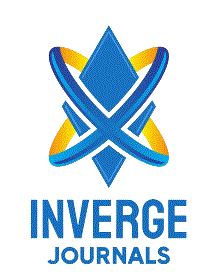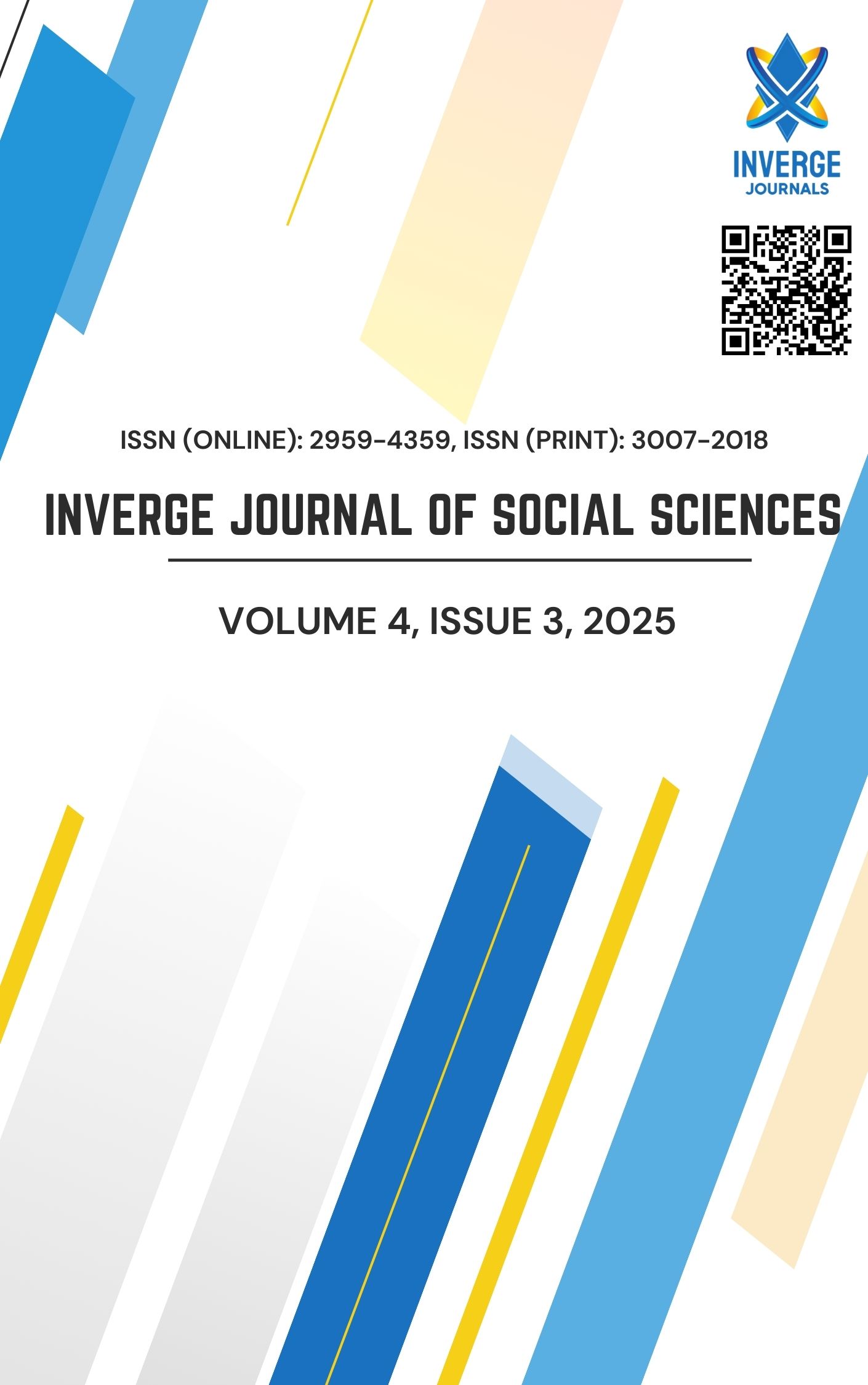Integrating Massive Open Online Courses (MOOCs) into Traditional Classrooms: Impact on Student Engagement, Learning Outcomes, and Educator Perspectives
DOI:
https://doi.org/10.63544/ijss.v4i3.155Keywords:
Massive Open Online Courses (MOOCs), Blended Learning, Student Engagement, Learning Outcomes, Educational TechnologyAbstract
This research investigates the integration of MOOCs as a supplement to traditional classroom instruction, particularly in enhancing student learning outcomes and engagement as well as the efficacy of educators. A mixed-methods design using quantitative and qualitative data, via surveys and semi-structured interviews with educators in Bahawalpur, Pakistan. The research shows that MOOCs help to increase student engagement, support individualized learning, and improve student performance. Key areas for the integration of MOOCs include promoting a sense of community among learners and enhancing learner motivation, but challenges in using MOOCs in an academic course have included issues about time to integrate including aligning with curriculum content and student learning outcomes. It was mentioned in the study that MOOCs are useful as an ancillary resource, but there were issues of whether they would fit modern educational goals. It was also concluded that various demographic variables like age, gender, and professional experience did not significantly affect perception of MOOC integration. The results highlight the need for better integration in formal curricula, for quality control, and educator support. This work adds to the literature on MOOCs and, in particular, offers practical measures for using them in traditional classrooms and suggestions for future improvement of their integration and effectiveness as tools used to enhance the educative process. Future research should investigate the longer-term effects of MOOCs and their educational role in a number of contexts.
References
Adams, C., Estrada, V., & Brown, J. S. (2021). Exploring factors that affect student retention in a blended learning environment. Distance Education, 42(2), 201–220. https://doi.org/10.1080/01587919.2021.1911626
Alraimi, K. M., Zo, H., & Ciganek, A. P. (2015). Understanding the MOOCs continuance: The role of openness and reputation. Computers & Education, 80, 28–38. https://doi.org/10.1016/j.compedu.2014.08.007
Annabi, C. A., & Wilkins, S. (2016). The use of MOOCs in transnational higher education for accreditation of prior learning, programme delivery, and professional development. International Journal of Educational Management, 30(6), 959–975. https://doi.org/10.1108/IJEM-06-2015-0075
Bali, M., Collis, B., Bajić, M., & Tabatabaei, S. A. (2019). Using MOOCs to support teaching and learning in higher education: A systematic review. The International Review of Research in Open and Distributed Learning, 20(5), 1–21. https://doi.org/10.19173/irrodl.v20i5.4290
Bernard, R. M., Abrami, P. C., Borokhovski, E., Wade, C. A., Tamim, R. M., Surkes, M. A., & Bethel, E. C. (2014). A meta-analysis of three types of interaction treatments in distance education. Review of Educational Research, 74(3), 379–439. https://doi.org/10.3102/00346543074003379
Bozkurt, A., Kizilcec, R., & Garrison, D. (2020). The evolution of Massive Open Online Courses and their potential in higher education. Journal of Distance Learning, 35(4), 177–188. https://doi.org/10.1080/01587919.2020.1821604
Brooker, A., Corrin, L., De Barba, P., Lodge, J., & Kennedy, G. (2018). A tale of two MOOCs: How student motivation and participation predict learning outcomes in different MOOCs. Australasian Journal of Educational Technology, 34(1). https://doi.org/10.14742/ajet.3237
de Moura, V. F., de Souza, C. A., & Viana, A. B. N. (2021). The use of Massive Open Online Courses (MOOCs) in blended learning courses and the functional value perceived by students. Computers & Education, 161, 104077. https://doi.org/10.1016/j.compedu.2020.104077
Dessart, L., Veloutsou, C., & Morgan-Thomas, A. (2015). Consumer engagement in online brand communities: A social media perspective. Journal of Product & Brand Management, 24(1), 28–42. https://doi.org/10.1108/JPBM-06-2014-0635
Garrison, D. R., & Vaughan, N. D. (2008). Blended learning in higher education: Framework, principles, and guidelines. John Wiley & Sons.
Hew, K. F., & Cheung, W. S. (2014). Students' and instructors' use of massive open online courses (MOOCs): Motivations and challenges. Educational Research Review, 12, 45–58. https://doi.org/10.1016/j.edurev.2014.05.001
Israel, M. J. (2015). Effectiveness of integrating MOOCs in traditional classrooms for undergraduate students. International Review of Research in Open and Distributed Learning, 16(5), 102–118. https://doi.org/10.19173/irrodl.v16i5.2222
Jansen, D., Rosewell, J., Kear, K., & Dee, S. (2015). Analytics4Action Evaluation Framework: A review of evidence-based learning analytics interventions at Birmingham City University. Proceedings of the Fifth International Conference on Learning Analytics and Knowledge, 114–118. https://doi.org/10.1145/2723576.2723589
Jiang, M., Khechine, H., Klemke, R., & Kinshuk. (2021). Impact of online education on self-regulated learning: A systematic review and meta-analysis. Computers & Education, 167, 104132. https://doi.org/10.1016/j.compedu.2021.104132
Lan, M., & Hew, K. F. (2020). Examining learning engagement in MOOCs: A self-determination theoretical perspective using mixed method. International Journal of Educational Technology in Higher Education, 17(1), 7. https://doi.org/10.1186/s41239-020-00194-2
Larson, M. B., Lockee, B. B., & Mitchell, M. (2014). The development and validation of the Classroom Community Scale (CCS) in a MOOC environment. The Internet and Higher Education, 23, 36–44. https://doi.org/10.1016/j.iheduc.2014.06.002
Ma, L., & Lee, C. S. (2019). Understanding the barriers to the use of MOOCs in a developing country: An innovation resistance perspective. Journal of Educational Computing Research, 57(3), 571–590. https://doi.org/10.1177/0735633118757732
Perkins, G. D., Ji, C., Connolly, B. A., Couper, K., Lall, R., Baillie, J. K., ... & Carnahan, M. (2022). Effect of noninvasive respiratory strategies on intubation or mortality among patients with acute hypoxemic respiratory failure and COVID-19: The RECOVERY-RS randomized clinical trial. JAMA, 327(6), 546–558. https://doi.org/10.1001/jama.2022.0028
Perrotta, C., Featherstone, G., Aston, H., & Houghton, E. (2013). Game-based learning for older adults' health and well-being: A review. Games and Culture, 8(6), 402–424. https://doi.org/10.1177/1555412013496404
Rafiq-uz-Zaman, M., & Ashraf, I. (2025). Academic needs of Madaris in 21st century: A study of Madaris in Tehsil Minchinabad, District Bahawalnagar, South Punjab. Inverge Journal of Social Sciences, 4(1), 122–131. https://doi.org/10.63544/ijss.v4i1.141
Rafiq-uz-Zaman, M., & Nadeem, M. A. (2025). Gauging the gap: Student perceptions of skill proficiency in skill-based education within schools of Punjab, Pakistan. ACADEMIA International Journal for Social Sciences, 4(2), 2307–2317. https://doi.org/10.63056/ACAD.004.03.0553
Rani, G., & Gandhi, A. (2023). MOOCs for professional development: Digital competence and attitude of teachers from higher education. Journal of Educational Technology & Society, 26(1), 1–15.
Romero-Frías, E., Arquero, J. L., & del Barrio-García, S. (2023). Exploring how student motivation relates to acceptance and participation in MOOCs. Interactive Learning Environments, 31(1), 480–496. https://doi.org/10.1080/10494820.2021.1901745
Schreurs, B., Kreijns, K., van den Beemt, A., & Knippels, M. C. (2014). How the design of blended learning programs can influence student outcomes: Results from a cross-sectional study. Computers & Education, 79, 28–39. https://doi.org/10.1016/j.compedu.2014.07.004
Shahid, N., Asif, M., & Pasha, D. A. (2022). Effect of Internet Addiction on School Going Children. Inverge Journal of Social Sciences, 1(1), 13–55. https://doi.org/10.63544/ijss.v1i1.3
Siemens, G. (2005). Connectivism: A learning theory for the digital age. International Journal of Instructional Technology and Distance Learning, 2(1), 3–10.
Sinclair, J., Boyatt, R., Foss, J., Rocks, C., & Joy, M. (2017). Massive Open Online Courses (MOOCs): A review of usage and evaluation. International Journal of Learning Technology, 12(3), 196–236. https://doi.org/10.1504/IJLT.2017.085987
Tseng, T. H., Lin, S., Wang, Y.-S., & Liu, H.-X. (2022). Investigating teachers’ adoption of MOOCs: The perspective of UTAUT2. Interactive Learning Environments, 30(4), 635–650. https://doi.org/10.1080/10494820.2020.1728743
Wang, M., Wise, S., & Bernard, D. (2018). MOOCs in the classroom: A critical review of their role in modern education. Journal of Educational Technology, 45(2), 233–245. https://doi.org/10.1111/jcal.12240
Wise, A. F., Hausknecht, S. N., & Zhao, Y. (2017). Incorporating profiles of participant engagement into the prediction of achievement goal activities. Learning and Instruction, 48, 1–11. https://doi.org/10.1016/j.learninstruc.2016.09.003
Yu, Z., Xu, W., & Sukjairungwattana, P. (2024). A meta-analysis of eight factors influencing MOOC-based learning outcomes across the world. Interactive Learning Environments, 32(2), 707–726. https://doi.org/10.1080/10494820.2022.2093912
Zakaria, M., Awang, S., & Rahman, R. A. (2019). Are MOOCs in blended learning more effective than traditional classrooms for undergraduate learners? Universal Journal of Educational Research, 7(11), 2417–2424. https://doi.org/10.13189/ujer.2019.071110
Downloads
Published
How to Cite
Issue
Section
Categories
License
Copyright (c) 2025 Sadam Hussain, Muhammad Navid Iqbal, Dr. Nosheen Malik

This work is licensed under a Creative Commons Attribution-NonCommercial-ShareAlike 4.0 International License.
The work is concurrently licensed under a Creative Commons Attribution-NonCommercial-ShareAlike 4.0 International License, which permits others to share the work with an acknowledgement of the authorship and the work's original publication in this journal, while the authors retain copyright and grant the journal the right of first publication.









